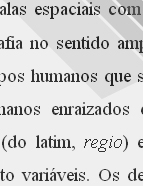

................................
Clearly driven by didactic concerns, he provided precise instructions on how to prepare the work to have academic value, emphasising "the method and clarity of exposition; the integrity of statements; scrupulousness in the documentation" (the italics are the author's; p. 3). The detailed plan he proposed was broken down into various questions that, through careful consultation of documentation and archives, would allow for the creation of a general history of the municipality and an overview of its administrative life. He did not omit the bibliography at the end, indicating the studies and collections of documents published by the municipal councils. The bibliographies and methodological proposals regarding local studies highlight the perceived need to increase both the quantity and quality of this type of research. Although progress was made in this direction, it was hesitant and considerably delayed compared to developments in other European countries. Various factors may explain this, including the underdevelopment of the higher education system in Portugal and the political-ideological context of the dictatorship and the Estado Novo. Therefore, it may be said that there was greater continuity with the type of studies conducted in the 19th century than there was innovation during the first half of the 20th century.
Historical and chorographical publications continued to attract the interest of scholars, and more useful information was compiled. At the beginning of the century, the Novo Diccionario Corographico de Portugal Continental e Insular [New Chorographic Dictionary of Mainland and Insular Portugal](1902) by Francisco Cardoso de Azevedo was published, which was later refined and republished. A more extensive work was the publication by Esteves Pereira and Guilherme Rodrigues, Portugal: diccionario historico, chorographico, heraldico, biographico, bibliographico, numismatico e artistico [Portugal: Historical, Chorographic, Heraldic, Biographical, Bibliographical, Numismatic, and Artistic Dictionary](1904-1915, 7 vols.), which provided a wealth of information useful for local history. Several years later, the Diccionario chorographico de Portugal Continental e Insular [Chorographic Dictionary of Mainland and Insular Portugal] (1929-1949, 10 vols.) by Américo Costa was also published. In the field of scholarly memoirs, which made abundant use of archives and documentary sources, the work of Francisco Manuel Alves, better known as the Abbot of Baçal, is noteworthy: Memórias arqueológico-históricas do distrito de Bragança [Archaeological and Historical Memoirs of the District of Bragança](11 vols., 1909-1932).
